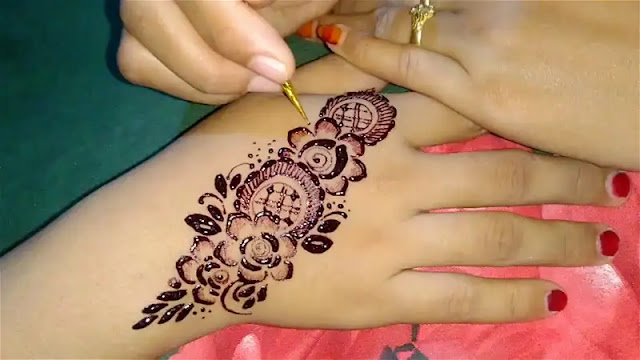Regardless of age, race or gender, most people want to look and feel their best for any occasion. Men and women alike adorn their bodies to please both themselves and others, attracting favorable attention to boost confidence and courage. Yet one traditional body art — henna — can make a temporary, personal statement while offering long-term benefits.
Indians, in particular, regularly adorn their bodies with beautiful jewelry — such as bangles, earrings, necklaces, and other items made of precious metals and stones. On special occasions it is common to also paint intricate designs on the hands and feet with henna — an herbal paste with a rich history of ceremonial, cosmetic and medicinal use, spanning many different cultures.
What is henna?
Henna is a plant-based dye obtained from the leaves of the tropical flowering plant Lawsonia inermis, a member of the Lythraceae, or loosestrife family. Also referred to as Egyptian privet or the mignonette tree, this small tree/large shrub grows quickly in semi-arid zones, and can reach an average height of three to eight meters.
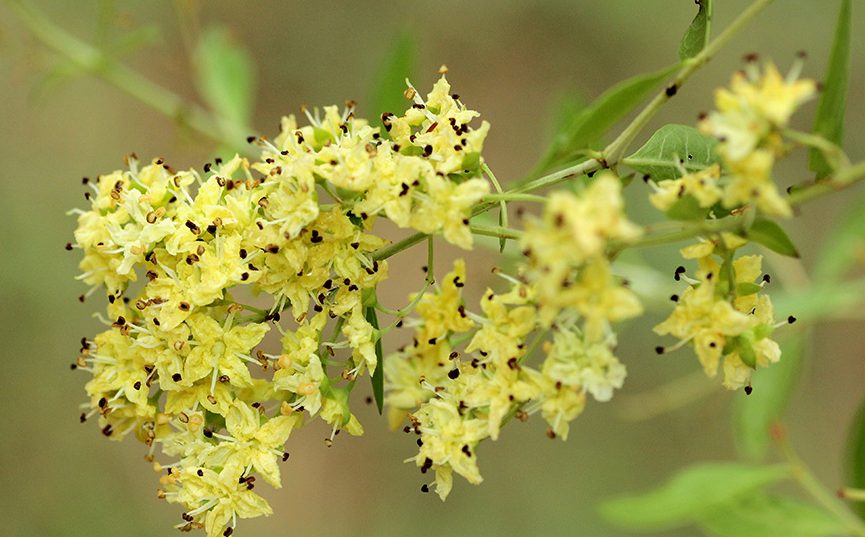
Henna paste is made from this tropical perennial’s small evergreen leaves, but the plant also yields heavily scented flowers — primarily white — which entice passers-by to take a deep breath. An extract of these flowers is used commercially in perfumery and fragrance oils.
While henna has many different names across India, such as “marudhani,” “ranjaka,” “mendi” and “gorinta,” it is most commonly known as “henna” or “mehndi.”
History of henna
Success
You are now signed up for our newsletter
Success
Check your email to complete sign up
The henna tree is considered native to parts of Africa, Australia and Asia, including India. Many historians believe that the use of henna originated in Northern Africa and spread to India through cultural fusion, being introduced by the reigning Egyptian Moghuls. Henna was historically used to dye natural fibers like silk and wool, leather, and even the hooves of horses; but that’s not all.
In ancient times, it was discovered that the crushed mehndi leaves would stain the palms or hair if it remained undisturbed for a couple of hours. The bright scarlet color of the henna would remain vivid for the first three days after application, then fade, become dull, and eventually vanish on the sixth or seventh day.
Muslims utilized crushed henna leaves to dye their hair and beards and to paint their bodies and nails during the Prophet Mohammed’s period. While Muslim communities continue to have a strong henna tradition, its use predates the Islamic religion by many years.
Bodhisattvas and female goddesses seen in Ajanta paintings in India (2nd and 1st centuries BC) and other ancient cave murals in Sri Lanka depict the divinities adorned with henna.
Mummified Egyptian rulers have been discovered with henna-painted fingernails, toes and hair, although archaeologists are unclear whether this was part of the mummification process or a living custom. There are also shards of evidence suggesting henna was employed for bridal and festive occasions during the ancient Sumerian civilization, as early as 4,000 BC.
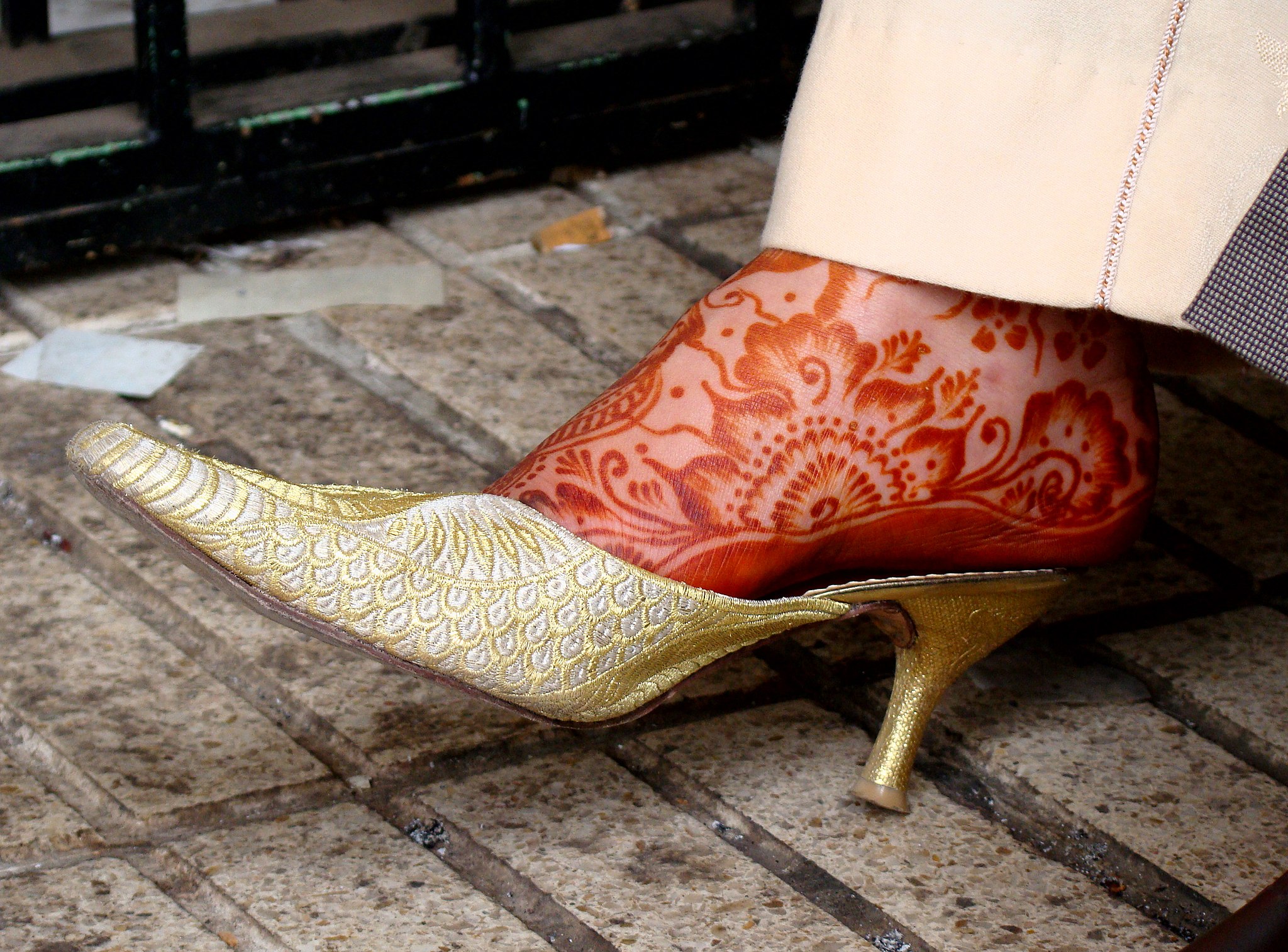
Henna traditions
Whether separately, or through a process of imparting knowledge and customs across cultures, our ancestors founded many traditional uses for the red-dying henna leaf.
Various religions, including Judaism, Buddhism, Hinduism, Sikhism, and Islam, regard henna as a symbol of blessings, good luck, happiness, health, fortune and love. The dye’s natural orange stain is associated with the earth’s energies, such as blood and ochre. It has long been used in Chinese spiritual practices and rituals.
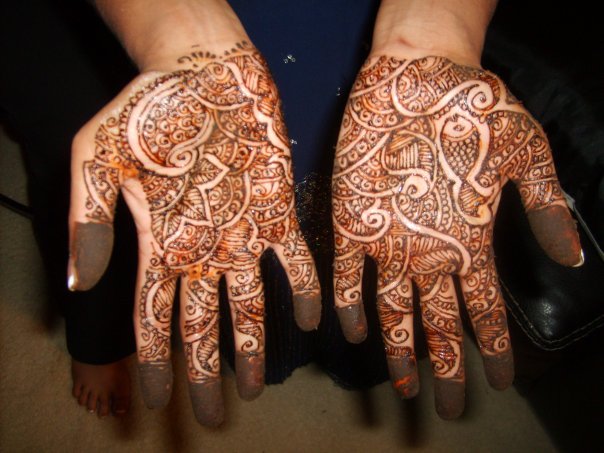
Islamic henna culture
Islamic ladies paint their hands with henna to commemorate celebrations such as Eid, pregnancy, and marriage. A henna party is held where all of the invited guests adorn their bodies while enjoying food, music, and dance.
Henna is linked with “Baraka,” an Islamic spiritual force, or blessing, and is sometimes used to ward off evil spirits or negative energies in the environment. Women may paint symbolic images of fish, eagles, water, or birds on their hands to bring fertility, vitality, and wealth; as well as divine messages.
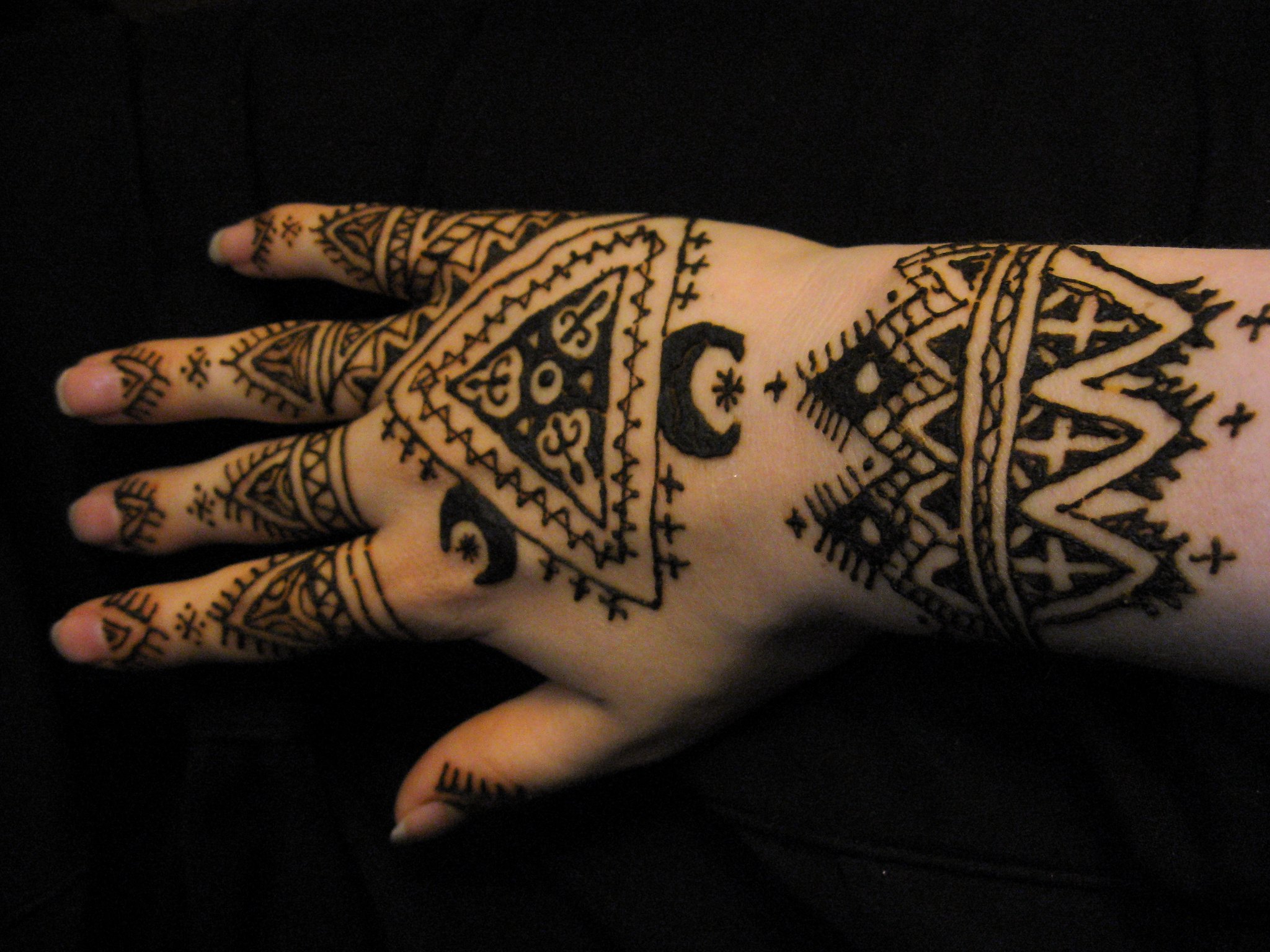
Arabian henna designs use a stylish free-flowing method especially suitable for depicting flowers, foliage, and paisley patterns. By leaving abundant white space, the designs become more pronounced and beautiful. Egyptian patterns are usually geometric in nature, while Indian henna designs are predominantly floral.
Indian henna culture
Henna is deeply rooted in Indian culture, and intrinsically connected to our frequent festivals — including Diwali, Sankranthi, Holi, weddings, betrothal, childbirth, baptism, and so on. Even Hindu Goddesses are portrayed with henna skin decorations.
The typical three-day Indian wedding begins with a “Mehndi Party,” which is similar to a bachelorette party in the United States. This henna ceremony is only for female participants, who will decorate the bride’s and each others’ hands.
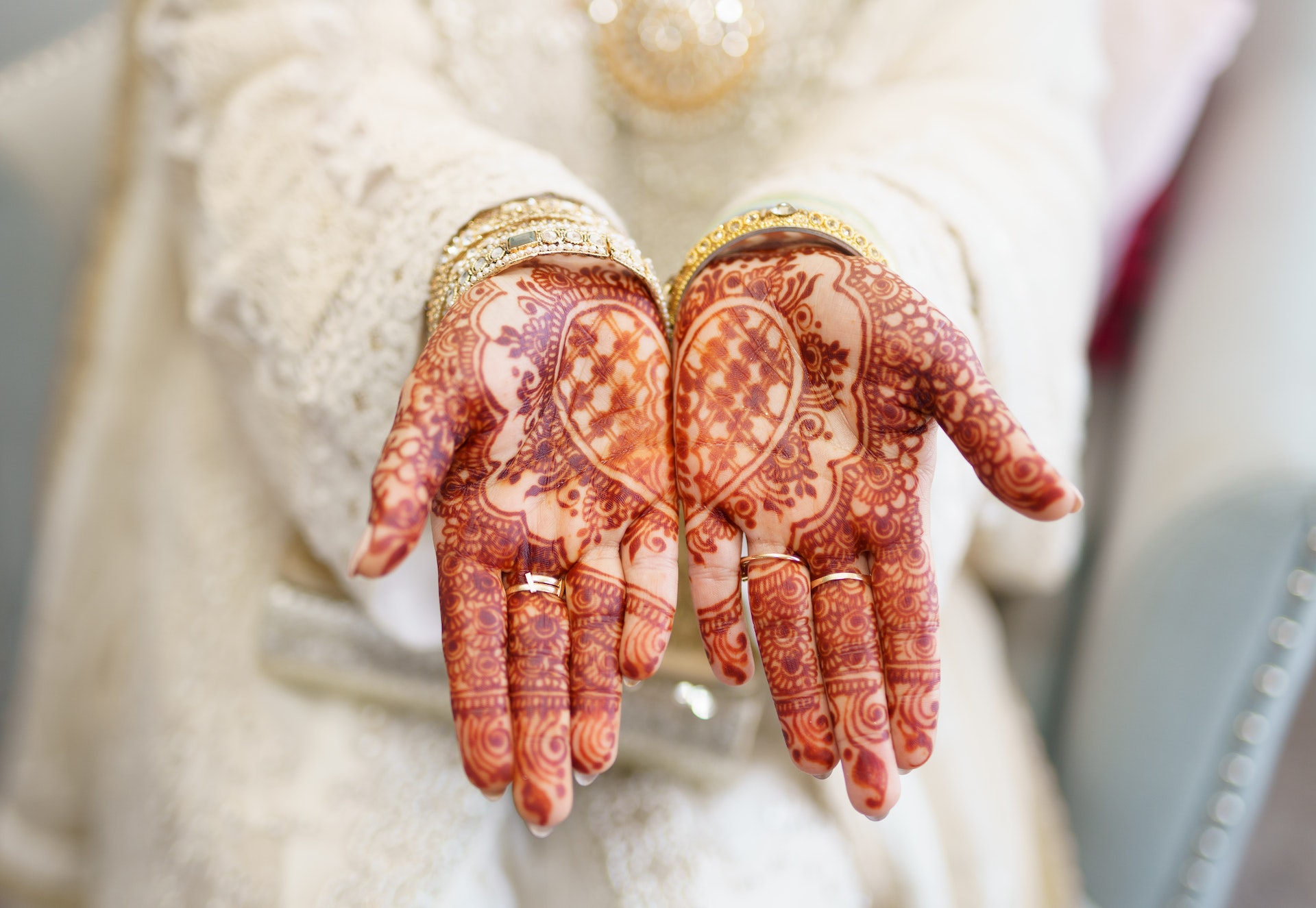
Traditionally, only married women were allowed to attend this ceremony, but times have changed, and all females are now welcome to apply henna. Male and female family members, friends, and invited guests can participate in the feast, music and dance.
It is said that the darker the scarlet stain on the bride’s hands, the more the bridegroom loves her. Nowadays, even the bridegrooms apply henna on their hands to measure their bride’s love.
Henna for body art
In India, fresh leaves are ground into a fine paste with a betelnut and a little water. After a couple of hours, a few drops of lemon juice and eucalyptus oil are added and it is ready to use on hands or hair. The paste can also be made with dry powder as described below.
For the best results, prepare the skin by washing with water and rubbing in a few drops of lemon juice, eucalyptus oil, or coconut oil. This will enhance the color of your henna design.
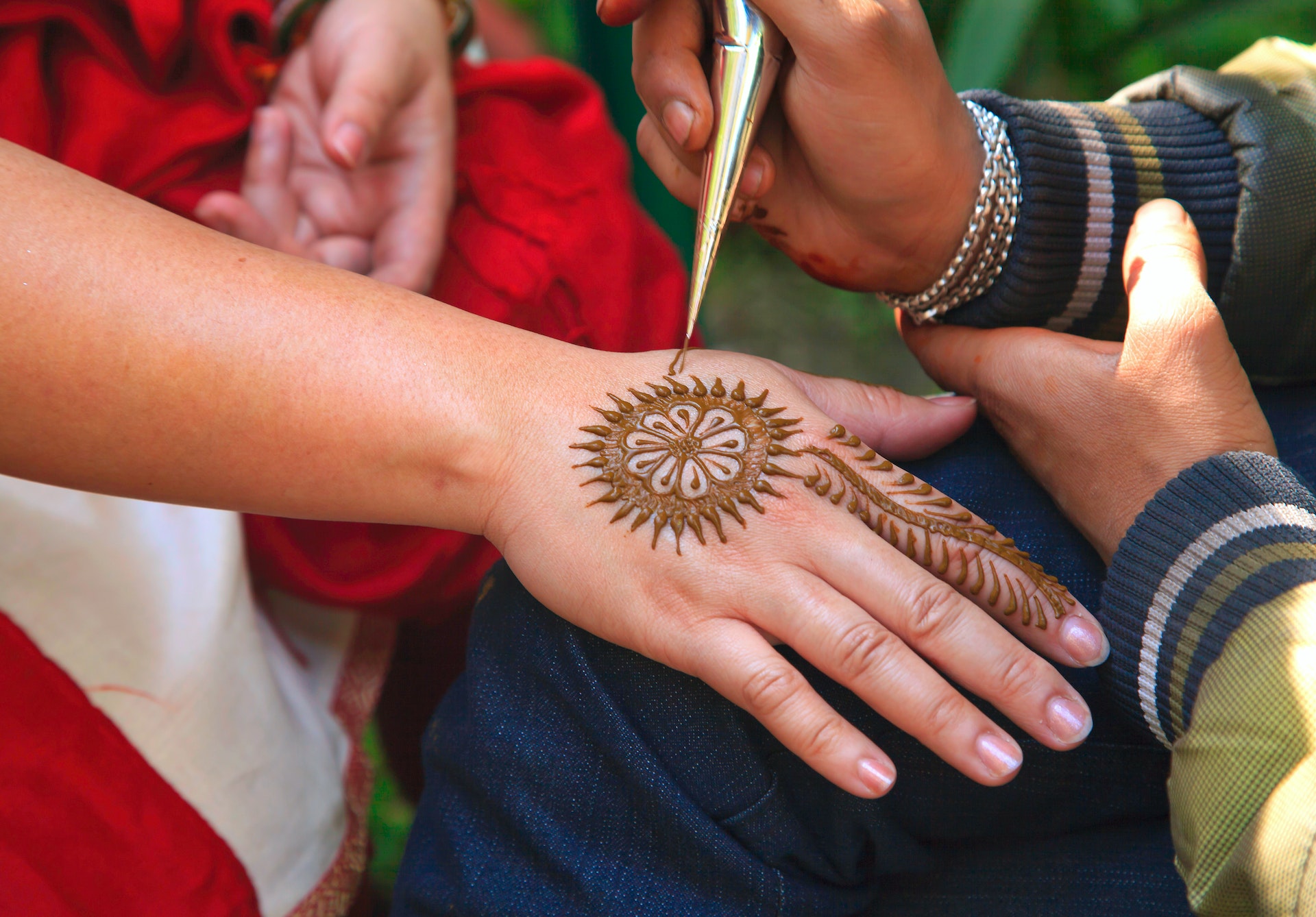
Henna is applied through a cone — much like a cake decorator’s piping bag. You can make your own cones with cellophane or mylar, rolled into a cone shape and secured with a stapler or tape. After filling the cone with henna paste, snip the end to produce a small opening for fine-tip henna drawing.
Commercially available, ready-made henna cones for hand designs are just as good. Another option is to hire a professional artist to create a stunning look for the big occasion.
Henna for hair
As a natural hair dye, henna improves the hair from the scalp to the ends. The phytochemicals in this herbal treatment nourish the hair and hair follicles — preventing hair loss, splitting and breaking. It brings out a natural shine and silkiness, while promoting hair growth and volume.
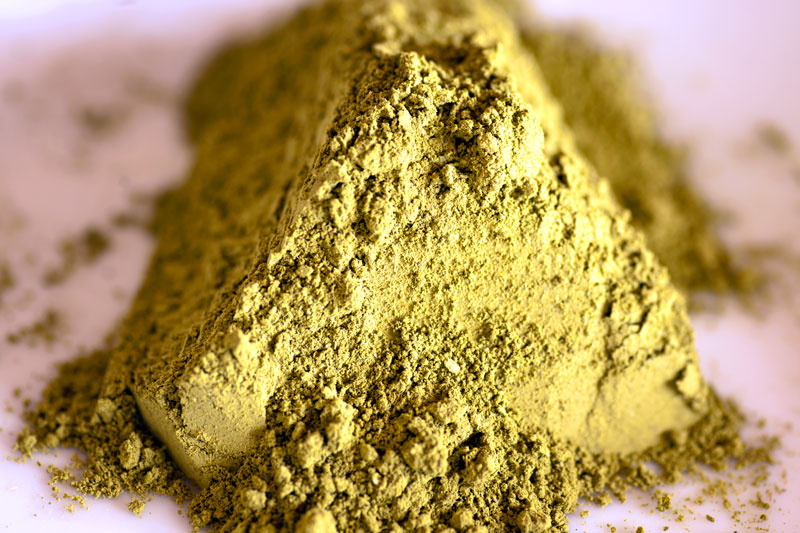
For a henna hair dye, soak the necessary amount of henna powder (about eight tablespoons for shoulder-length hair) overnight in water or rosewater. To dissolve and improve the natural dying agent — lawsone — essential oils are added to the paste. Add one tablespoon of eucalyptus, lavender, or rosemary essential oil, along with lemon juice — which surprisingly helps darken the dye.
Apply to clean, towel-dry hair in sections, starting at the roots. To achieve the desired auburn effect, rinse your hair after three hours. Apply coconut oil after it has dried, and then shampoo your hair the next day.
Medicinal properties of henna
In the Indian medical system Ayurveda, henna is used to treat fever, jaundice, vertigo, menstrual problems, and a range of other ailments. Henna is recognized as anti-inflammatory, and thus helps to ease muscle and joint pain.
The lawsone (hennotannic acid) in henna leaves is both antibacterial and antimicrobial. Henna also has antifungal properties, which can help alleviate dandruff and hair loss.
Many of the nourishing and strengthening effects henna has on hair can also be achieved in the nails, which may explain why people began painting their nails thousands of years before nail polish was invented.
Practically every home garden in India has a henna tree, so we can paint our hands or color our hair whenever we want. It is common to keep henna flowers in the closet for their lasting, sweet fragrance.
While henna has long been used for bodily ornamentation, it has more recently become a popular beauty product that is used around the world. The plant is cultivated across most of India, the top exporting country for henna.
Powdered henna is readily available at Indian groceries and many beauty and health shops. It is inexpensive and easy to use on hair; or — with the help of an artistic friend — on your body. Since this rich, earthy dye is both natural and temporary, there is little reason not to see what it can do for you.



